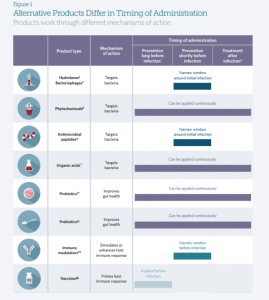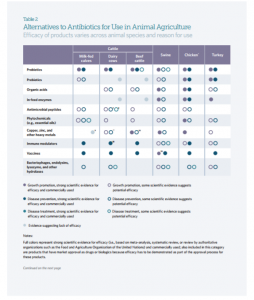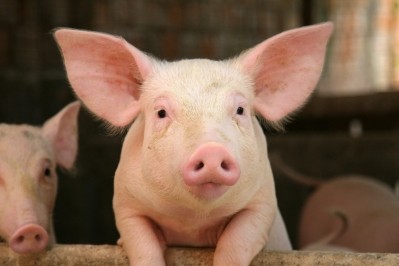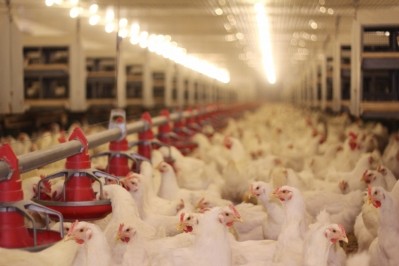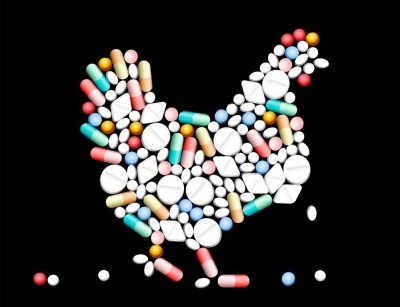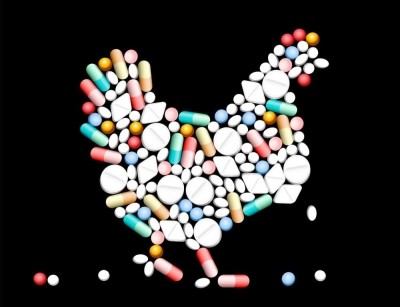Efficacy of alternatives to antibiotics can vary considerably by species and purpose of use: Pew Trusts

The Pew Charitable Trusts released the report, Alternatives to Antibiotics in Animal Agriculture, on Monday. The document addressed information available on vaccines, probiotics, prebiotics, immune modulators and other alternatives products used in feed.
The report sought to collate data on alternatives to antibiotic use for disease prevention and growth promotion, along with highlighting areas where additional research or data are needed, said Karin Hoelzer, senior officer on the project. “What we tried to do was synthesize the currently available scientific evidence,” she added.
She told FeedNavigator: “We hope that this will be helpful to see where more research is needed.”
“What is the science? Where do we know that the alternatives work? And where do we have some indication that they might work, but we need more data or indications that the alternative doesn’t work in a certain species."
Use of alternative products that support animal health and development could offer away to minimize the need for antibiotics to be used and reduce antimicrobial resistance, she said.
“We think this is a very promising way of addressing that without compromising animal health."
Report data
Many of the options presented are promising, said Hoelzer. However, there are other aspects that still need to be considered such as their cost effectiveness, she added.
Timing can be an important factor to consider, as some products like probiotics can be given for a lengthy period of time, while bacteriophages are most effective during an infection and vaccines should be given prior to possibility of infection, said the authors.
The group also compared known data about the efficacy of several alternative products such as probiotics, prebiotics, organic acids, in-feed enzymes, antimicrobial peptides, phytochemicals, copper, zinc and heavy metals, immune modulators, vaccines and bacteriophages across different animal species, they said. “The efficacy of alternative products can vary considerably by species and purpose of use,” they added.
The authors were able to generate some conclusions based on the literature including that alternative products like probiotics and immune modulators have been demonstrated to be effective for disease prevention in milk-fed calves, while in-feed enzymes show better results for use in chickens and more work is needed to understand how they work for turkeys and swine.
Reactions to products tend to vary across species, production setup, herd disease status and may be altered by elements like feed composition or weather.
Synergy
It was encouraging to see the “synergy” that exists amount many of the products, said Hoelzer.
“A lot of the products work at the same time and have a benefit for the productivity of the animals,” she said. “That is a double win for the farmer who might be using these alternatives.”
However, there was a data gap for many of the products covered, she said. “Much of the data was studied in experimental studies – [in] relatively small operations or research farms that may not be directly applicable,” she added.
There are still questions regarding how some of the alternatives would function if tested on a commercial scale, or in a commercial facility, she said. “[It is a] tremendous opportunity for public-private partnerships to collect that data on real world settings,” she added.
Additionally, more research has been done with some animals compared to others – such as many products have been trialed with chickens but relatively few had also been studied with turkeys, said Hoelzer. “More data on each of the species is needed,” she added.
There also is a lack of good data regarding how antibiotics are being used on farms, and access to that information could help guide future research, she said.
“One of the things that this identified is that there are many different research opportunities,” she said. “But there’s a need to prioritize, and in order to do that we need more information on how antibiotics are actually being used in animal agriculture.”
